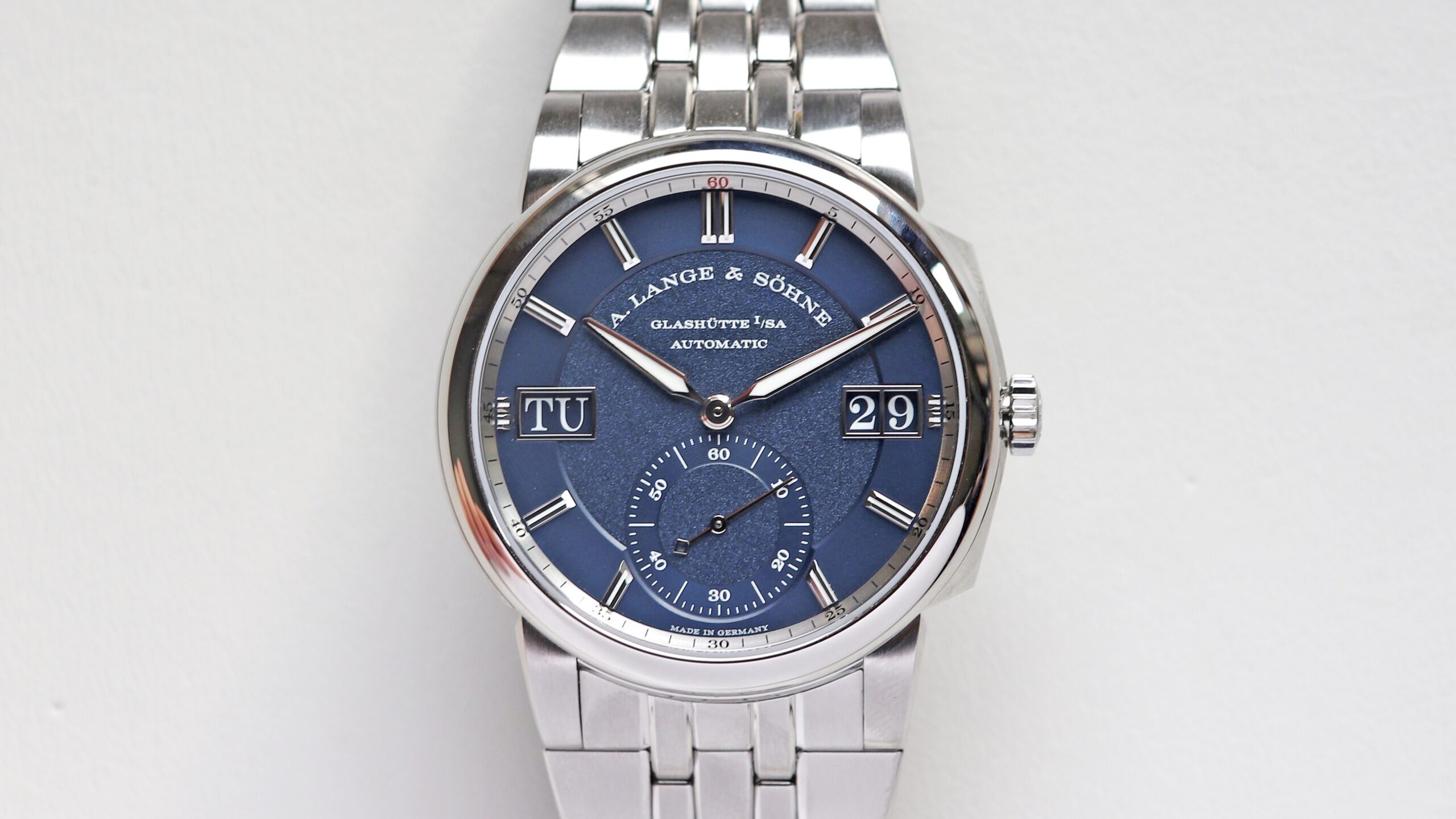
A. Lange & Söhne Zeitwerk
The Definitive Guide – June 2020 – Updated Feb. 2023
Before 2009, Lange’s watch families included Lange 1, Saxonia (encompassing Datograph, Double Split, etc.), 1815 (including Tourbograph), and a time-only Richard Lange. While each was distinctive, none could be considered a bombshell, at least not in the anticipated sense. A. Lange & Söhne was perceived as a traditional watchmaking manufacturé, aligned with a group known for eschewing risk. Despite the uniqueness and originality of icons like Lange 1 and Datograph, they leaned more towards the classic end of the spectrum.
However, expecting Lange to endlessly rejuvenate the past with a veneer of tradition and heritage was futile. Little known to many, the claim of being a traditional manufacture ran counter to the very foundational codes of A. Lange & Söhne. In a 1994 interview with Brunner, Günter Blümlein specifically highlighted Lange’s ties with tradition, pointing out that this affiliation was not about stagnation but rather a commitment to evolving and redefining watchmaking traditions.
Brunner: Do you consider the first modern collection by A. Lange & Söhne as a tribute to a great, albeit long ago, past?
Blümlein: Definitely not. The 1994 A. Lange & Söhne wristwatches and all upcoming models are anything but epigones of watchmaking legends. One can only speak of helpful innovation or mechanical sensation. The same applies to the construction of our calibers. It is not our intention to celebrate traditional craftsmanship or to compete for the most complicated clock. One of our goals is watchmaking beauty and perfect craftsmanship. On the other hand, innovations and differentiating design are important parameters for us.
Recommended Reading: The Definitive Guide to Lange 1
Then in 2009, when the majority of the top brands were relying on trusted and proven designs, Lange stepped on to the stage with the boldest move they have ever taken with something I refer to as the second re-birth of A. Lange & Söhne: The Zeitwerk.
It was not like anything the brand produced before, not even close. It was not following a trend as there was none. It was not something one would expect from such a traditional brand. Many hated, many loved, but none was indifferent. People wrote I have gone from hating to falling in love in two hours; and that was indeed the goal and success. Famous words that every watch enthusiast used at least once in their lifetime losing the DNA were echoing in every GtG or forum discussions, claiming that Lange lost its core. Yet, it was the true reveal of the essence.
In discussions, both then and now, Product Development Director Anthony De Haas shared that dealing with critiques from collectors and journalists was a challenging experience. He emphasized, “this is what you want. Controversy, polarization… Otherwise, it means you did not try hard enough.” However, he also noted that the amount of controversy surrounding the Zeitwerk was surpassed by another Lange creation—Odysseus.
Recommended Reading: A. Lange & Söhne Odysseus
Enter into this saga on Instagram and watch collecting, known for his distinctive taste in both shirts and watches, as well as his candid opinions: @santa_laura. He once told me, “I only like Zeitwerk. The rest pretty much look the same to me. Too German in engineering. You don’t want a BMW on your wrist.”
In summary, replicating tradition was never the goal; building upon it was. Thus, Zeitwerk stands as the perfect example of how A. Lange & Söhne seamlessly merges 150 years of tradition with modernity—without sacrificing even a bit of its distinctive character. The article below is crafted to serve as an extensive guide through all Zeitwerk models from 2009 to 2020. Buckle up!
Zeitwerk Collection
The concept of jumping hours/minutes dates back to the 19th century when it was patented by Josef Pallweber from Austria. The patent was also granted to IWC and several other companies. IWC’s Pallweber model from the late 19th century showcased vertically aligned hours/minutes indications—a design dictated by the technical constraints of the time. In Pallweber’s patent application, a clear desire for horizontal alignment is evident but was not realized due to these limitations. In this context, A. Lange & Söhne’s Zeitwerk represents the realization of this concept with exceptional accuracy and reliability after more than 120 years—an astonishing engineering achievement, to say the least.
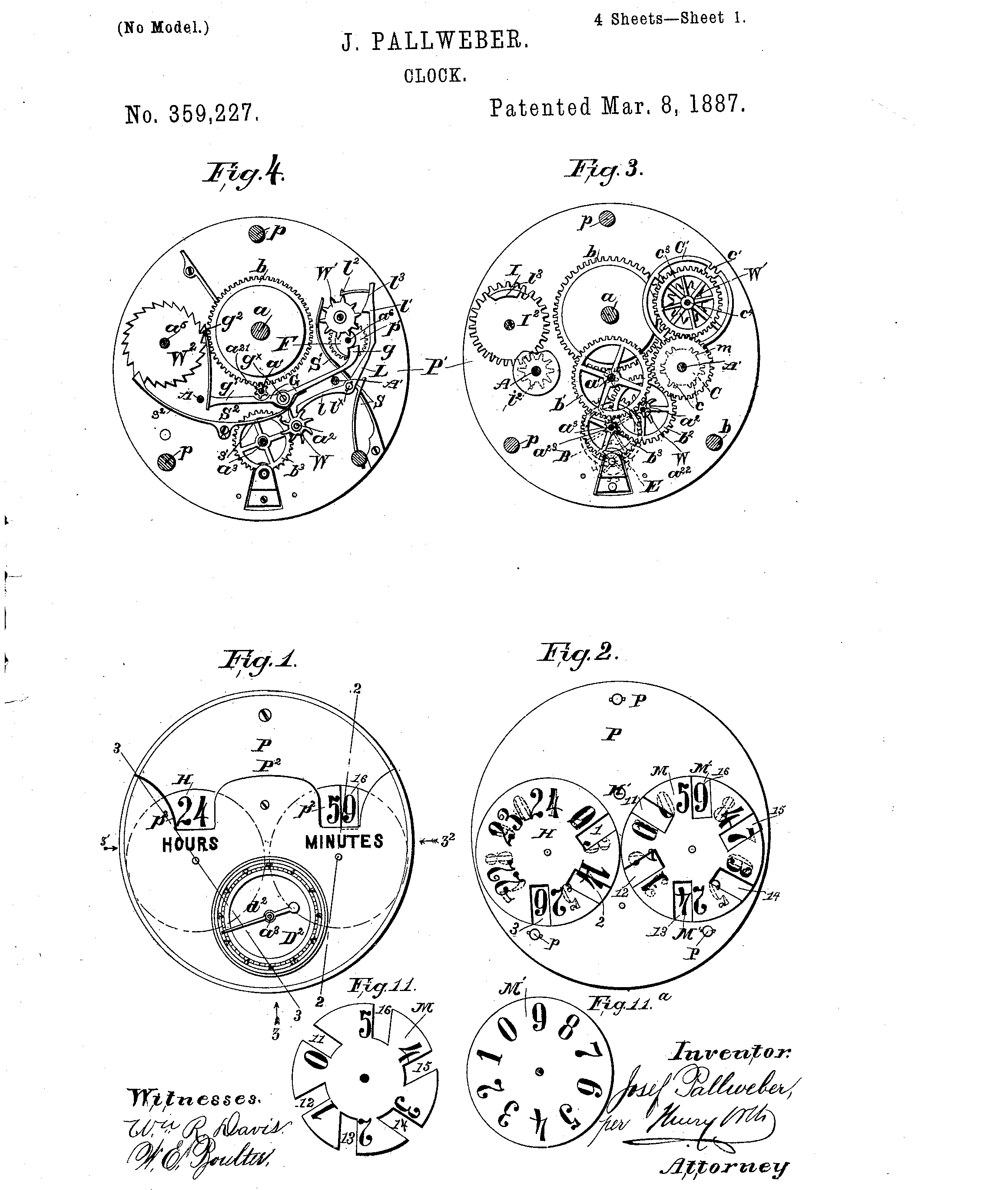
The drawings of Pallweber from the US patents office 1880s
I always liked to discover the people behind the scenes, as most of the time they’re the true heroes, unfortunately hidden away for the brands’ ambitions. The mastermind behind the jumping digital display of Zeitwerk was Jens Schneider – his patent can be read through here. A prototypist of the brand for more than a decade, Mr. Schneider currently works as the product development director of Lang & Heyne.
Since its inception in 2009, the Zeitwerk collection has seen significant expansion. Initially introduced in four distinct metals – platinum, yellow gold, white gold, and pink gold – it became evident that the collection had firmly established its presence. The platinum Zeitwerk 140.025 was a limited edition of 200 pieces, while the others remained in regular production. While the collection has primarily served as a platform for chiming complications, its 10th anniversary marked the introduction of the Zeitwerk Date, adding another dimension to the base.
An Odd Case
The intriguing peculiarities of the Zeitwerk commence with its case. A notable feature upon inspecting the case is the prominent crown positioned at 2 o’clock. This arrangement is a direct outcome of the movement’s architecture, which situates the balance wheel in the conventional 3 o’clock position.
The Zeitwerk boasts a 41.9 mm diameter and a relatively slender (considering its complexity) 12.6 mm thickness. The case design and finishing adhere to A. Lange & Söhne’s characteristic style—Teutonic, serious, substantial, and uncompromising. The case is structured in three levels: bezel, case band, and case back. While the bezel and case back exhibit a mirror-polished finish, the case band is brushed. This not only provides a striking contrast but also creates a visual illusion, making the watch appear even more slender. The lugs, a distinctive feature found in all of the brand’s watches, stand out with their signature notched bases and intricate architecture and finish.
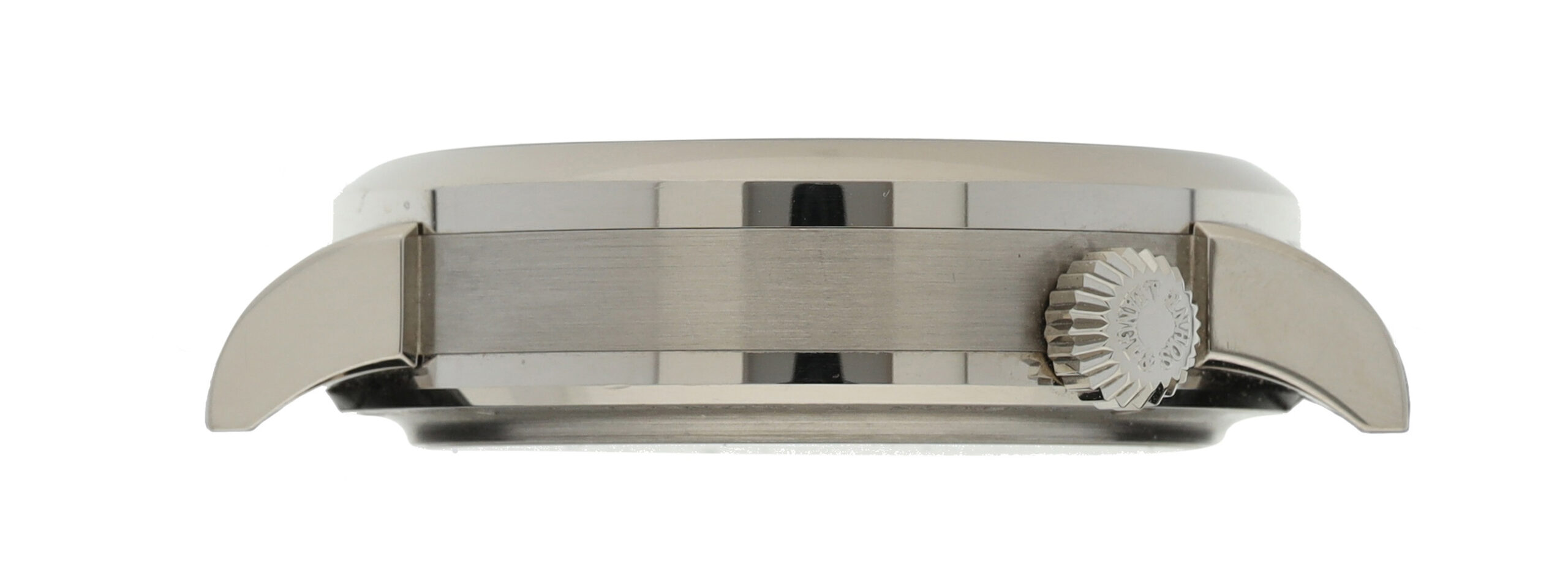
The lugs and the case structure, finish. Iconic.
Please note that the pink gold Zeitwerk models (prior to 2017-2018) feature a fully polished case instead of the usual partly brushed version. A long time Lange collector CR recently chimed on this topic at Watchprosite.com:
“As those who’ve followed Lange know, the brand never brushed the middle section of its rose gold cases until relatively recently. Their RG cases were always completely polished. This was due to concerns about the rose gold alloy’s ability to withstand the same (standard) brushed finishing that Lange used on all of its other cases (YG, WG, PT, HG, SS).
I think the specific concern involved tarnishing/discoloration of the brushed finish over time — that the middle of the rose gold case might eventually look too different from the rest of the case if it were brushed. It always struck me as odd that Lange didn’t see this as a problem that needed to be solved before any products could be released.”
The feeling on the wrist is gratifying. It is heavy, it is there, and one can feel the snap when the remontoir discharges its energy to move the huge discs. Also, thanks to its lug profile, the watch sits very balanced on the wrist without any wobble. It is truly an “experience” that one can only fully appreciate by strapping it on the wrist.
Here, I would like to quote one of the greatest to write about watches – Walt Odets reflects the feeling of Lange watches on the wrist the best. He describes the feeling on his article Purely Personal Musings on a Lange Saxonia as follows:
At 34mm and a slightly thick 8.5 mm or so, it looked like a biscuit and was twice the weight a gold watch its size ought to be. The buckle was twice the weight it ought to be. Even the sapphire back had more gold in it than two solid backs from anyone else.
Zeitwerk - The Dial
The most captivating design feature of the seemingly straightforward dial is the windows—a contemporary reinterpretation of the renowned 5 Minute Clock in Dresden’s Semper Opera House. This historic clock was crafted by Ferdinand Adolph Lange and his tutor (and later father-in-law) Gutkaes in 1841.
Zeitwerk is a time travel machine in 41 mms – it is a masterclass on bringing a traditional element from 150 years ago and adapt to modernity.
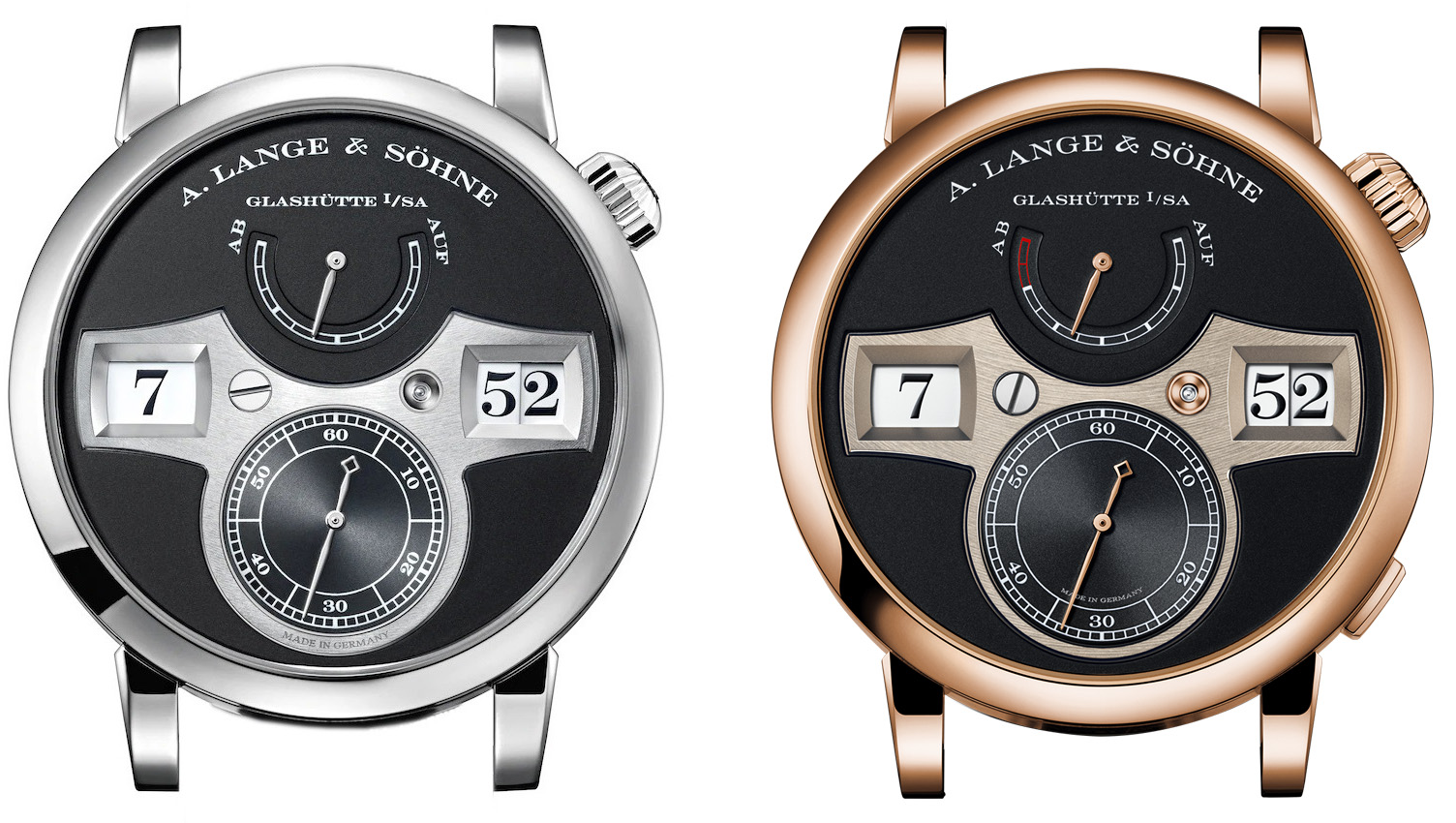
The first generation 140.029 (left) and the second generation 142.031 (right). Courtesy of Lange Uhren GmbH
The Zeitwerk’s dial exhibits a dual symmetry, both horizontally and vertically—windows on the horizontal axis, while hands and sub-dial circles are aligned vertically. The bat wing-shaped time bridge, aptly contoured, accentuates this symmetry, creating a balance between the lower and upper halves. The space between the time bridge and the power reserve indication harmonizes with the large seconds sub-dial below, contributing to an overall sense of balance. The gong-shaped spaces on the right and left sides provide a subtle hint of what is to come. In essence, the Zeitwerk is one of those rare watches where abundant symmetry remains captivating rather than dull.
Much like car designs that craft a distinct face or human expression on the front visage, Zeitwerk, with its two prominent windows, possesses a personality that classical watches often lack. Its design communicates a reserved emotion, seemingly attempting to counterbalance a hidden party on the backside. This arrangement creates the illusion that the watch is gazing back at you.
The ZeitBrücke (time bridge), constructed from rhodium-plated German silver and brushed against the grainy dial surface, is not merely a decorative element but an integral part of the mechanism, as evident from the screw on the left and the bearing jewel on the right. This purposeful design injects a touch of eccentricity within the full symmetry while also contributing to maintaining a thinner movement. The applause-worthy integration of a functional part into the overall aesthetics by Lange’s designers transforms the ZeitBrücke into the signature element of the watch.
The disc jump is so fast and accurate; one wants to meet with the watchmaker and hand over a medal for the meticulous adjustment – luckily I did but did not give him a medal. If you blink, you lose it and you have to wait for the next minute. What is more fascinating is, this accuracy never fails.
However, nothing in life is perfect; not even Zeitwerk. As apparent from the minute window (to the right), the discs are not sitting on the same level but rather constructed on top of each other; which was one of the main critiques directed towards Zeitwerk. Whether A. Lange & Söhne thought such a fix or was it applicable at all is beyond my knowledge.
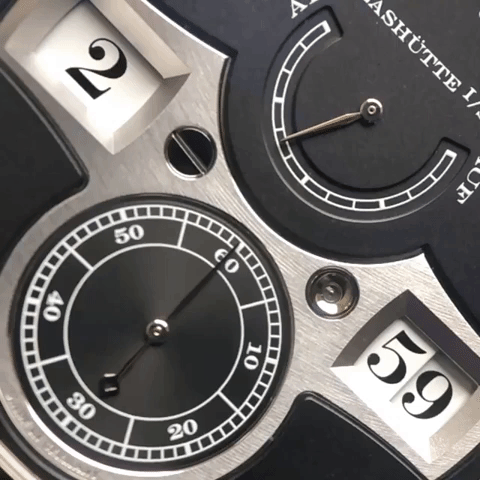
Following 13 years of continuous production, the first generation Zeitwerk was retired in 2022. The new generation came in platinum case / rhodium dial and pink gold case / black dial configurations. Interestingly, neither are limited, yet as usual with the brand’s late launches, boutique exclusive.
Design-wise, the Zeitwerk update strongly reminiscing the Lange 1 updated made in 2015. Namely; as much small touches as possible on the dial side to retain the originality, but with a bit of a modern spice. In the new Zeitwerk, we see that the sub-seconds dial is a tad larger, expanded through the german silver periphery. The detail that changes the look however, is the updated font. It is thinner, more defined, leaving much more space to the dial – hence the reason the piece feels a bit larger, despite having the same size.
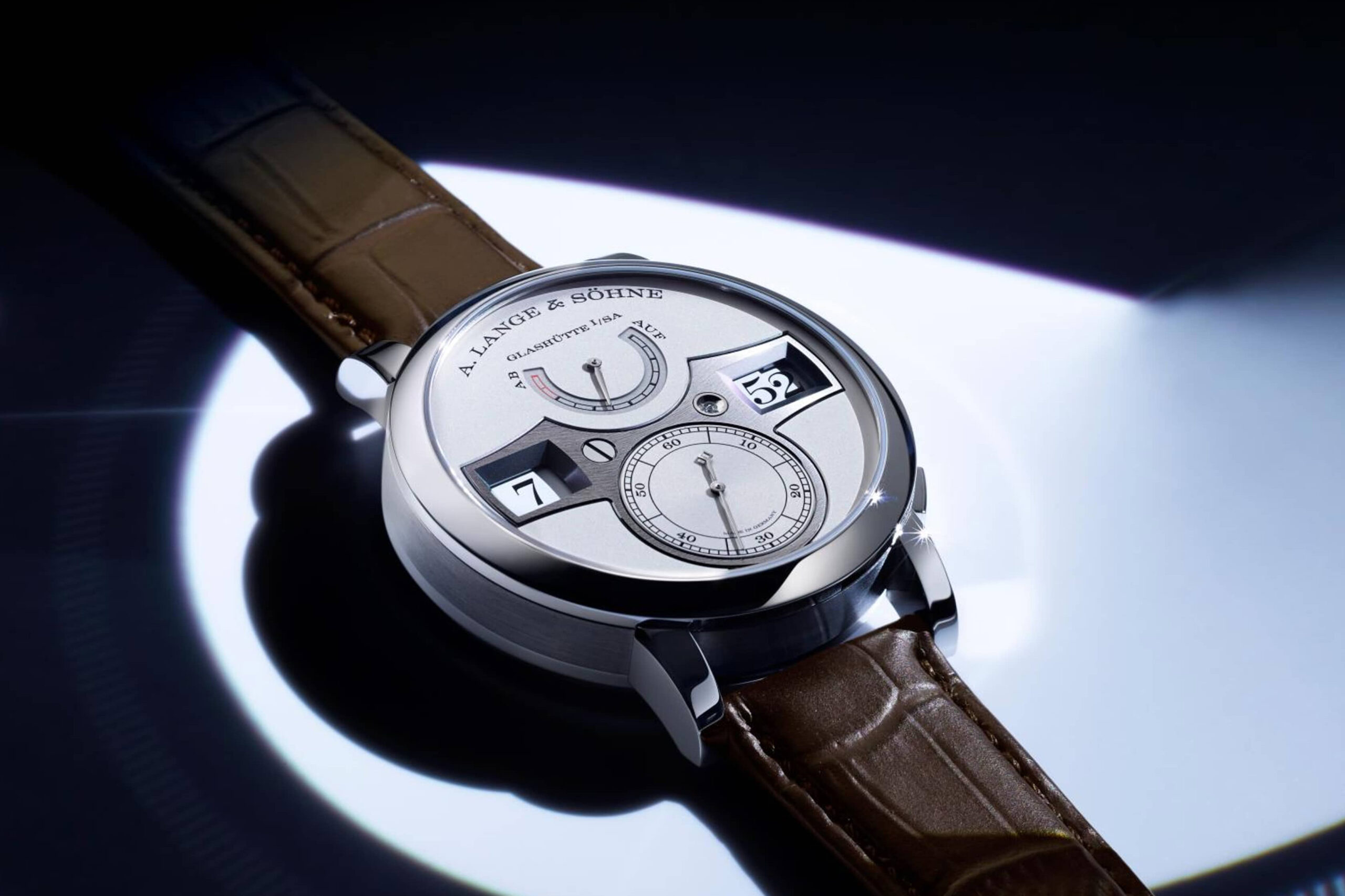
Note the thinner font, bigger sub-dial, and “MADE IN GERMANY” inscription within the sub-dial. Courtesy of Lange Uhren GmbH
The new Zeitwerk also brings quick-adjuster pusher at 4 o’clock. Thanks to the new arrangement, the hours disc can now be advanced by a pusher, and not only via crown.
As controversial or out of the line as it is; Zeitwerk was immediately recognized by GPHG in 2009 where the model won the Oscars of watchmaking – AIGUILLE D’OR GRAND PRIX. And I can tell that this watch deserves every bit of the prize.
Zeitwerk Movements - L043.1 & L043.6
As of May 2020, within less than 30 years, A. Lange & Söhne has engineered numerous manufacturé calibers, showcasing not only technical prowess but also innovative creations like the Triple Split or Cabaret Tourbillon. They’ve also produced movements so distinct, distinguished, and exquisite that they have become timeless classics, as exemplified by the Datograph. Over time, the brand has garnered a reputation as a preeminent “movement maker.”
Caliber L043.1, introduced in 2009 after years of development, is a testament to this title. Much like its dial, the movement of the Zeitwerk stands out both technically and aesthetically, existing as a unique entity in a sea of derivative watches and movements. It serves as the type of movement you proudly showcase to your non-watch enthusiast friends, offering them a glimpse into what makes these timepieces truly special.
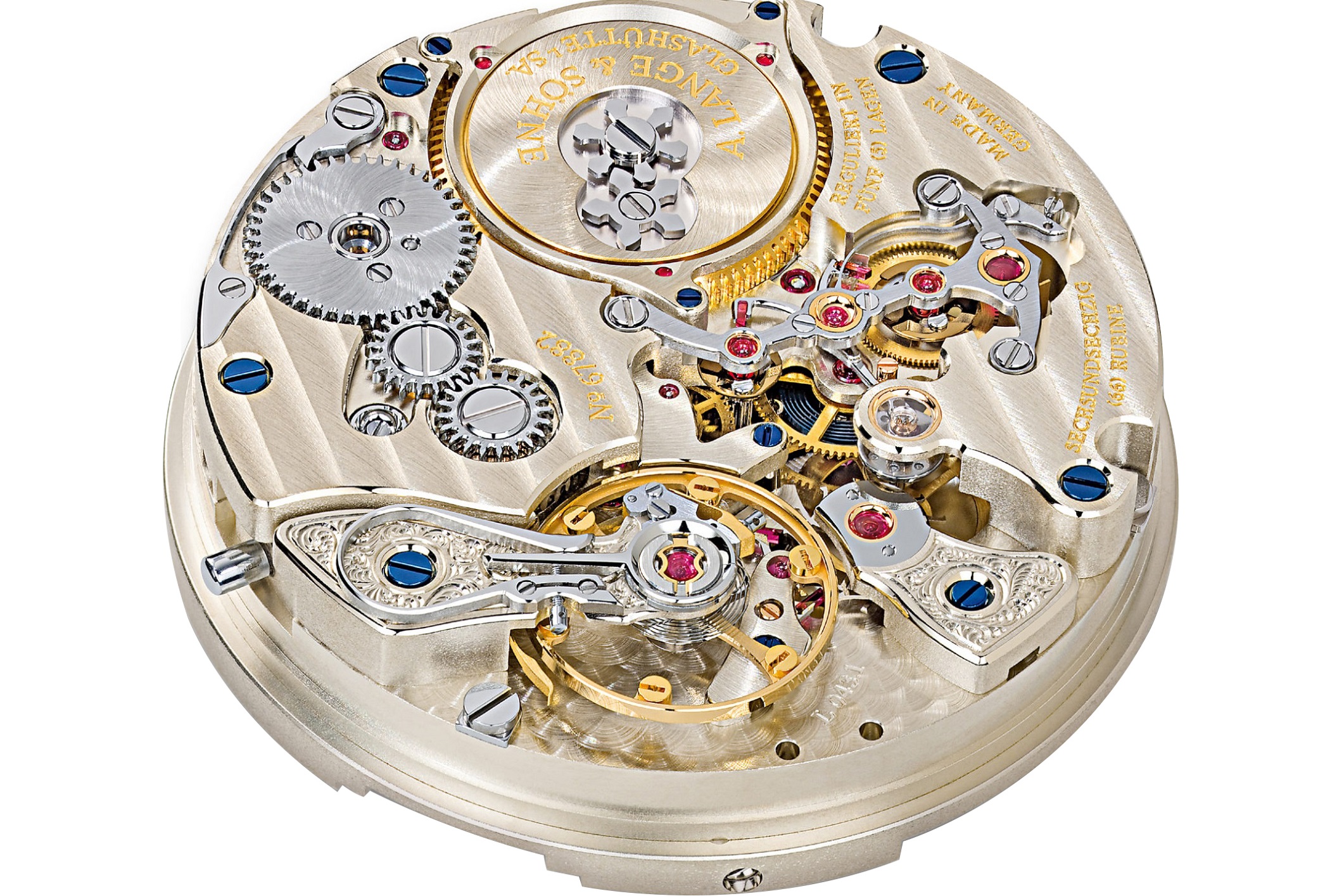
In order to truly grasp the importance of Zeitwerk; we must understand how it actually works.
Taking the photo above as reference; starting from 12 o’clock and going clockwise, we have the mainspring barrel, anchor bridge carrying the constant force mechanism, escapement, balance wheel and the winding gears.
The mainspring barrel is the powerhouse that supplies the energy to run the watch. In a typical watch with hands, where the power requirements are not as demanding as those for large discs, the barrel typically accommodates a regular, relatively short, and thin mainspring. However, the Zeitwerk takes a different approach, featuring the thickest mainspring that A. Lange & Söhne produces to generate the substantial torque required for the large discs. As Uncle Ben aptly puts it, “with great power comes great responsibility,” and in this case, the responsibility lies on the shoulders of the remontoire mechanism.
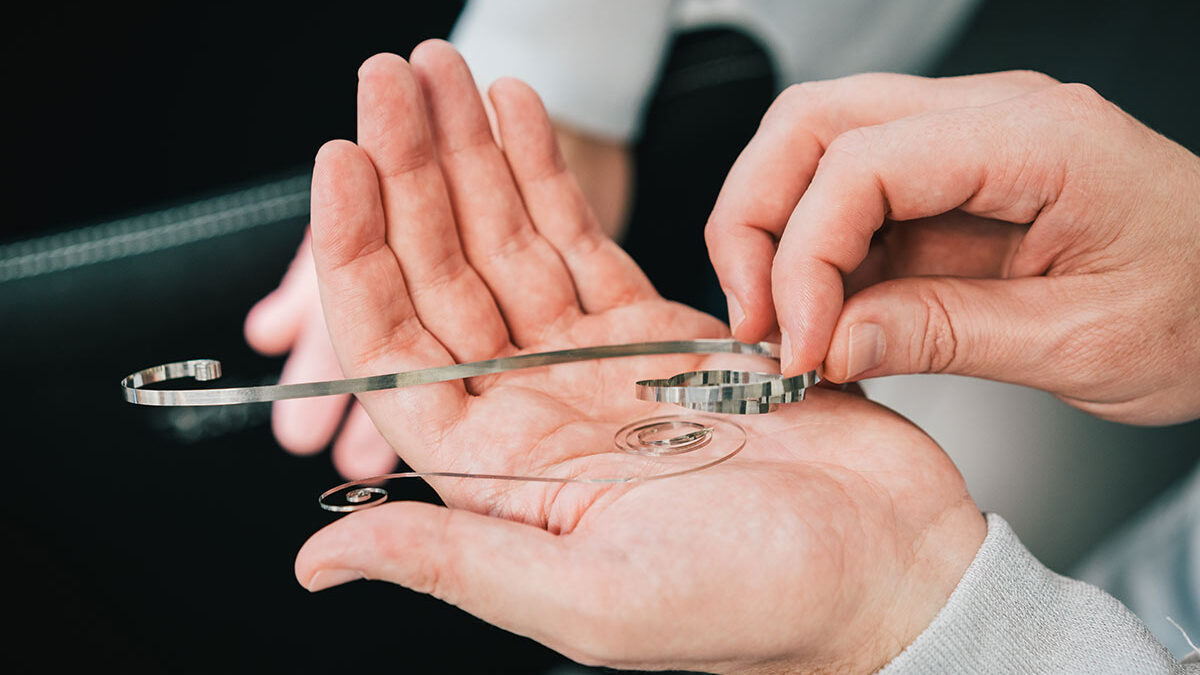
A remontoire (meaning “to wind” in English) is a small secondary source of power, a weight or spring, which runs the timekeeping mechanism and is itself periodically rewound by the timepiece’s main power source, such as a mainspring. The constant force mechanism, delivers equal torque every minute to create that magical disc jump; 1608 times a day.
Before jumping into the explanation below, it is important to understand the following two concepts:
- The power coming from the mainspring is too much for the balance system to handle. Therefore, the constant force escapement releases an optimal portion for the watch to work.
- The third wheel in regular watches sits between the center wheel (minutes hand) and fourth wheel (seconds sub-dial) and arranges the corresponding gear ratio.
As known, Zeitwerk shows the time with three discs – hours, minute units and minute tens. Zeitwerk demands a significant amount of power to snap forward all three discs at the same time, or at least once in every minute for the minutes disc. Remontoire is the mechanism that makes this magic happen precisely in every 60 seconds.
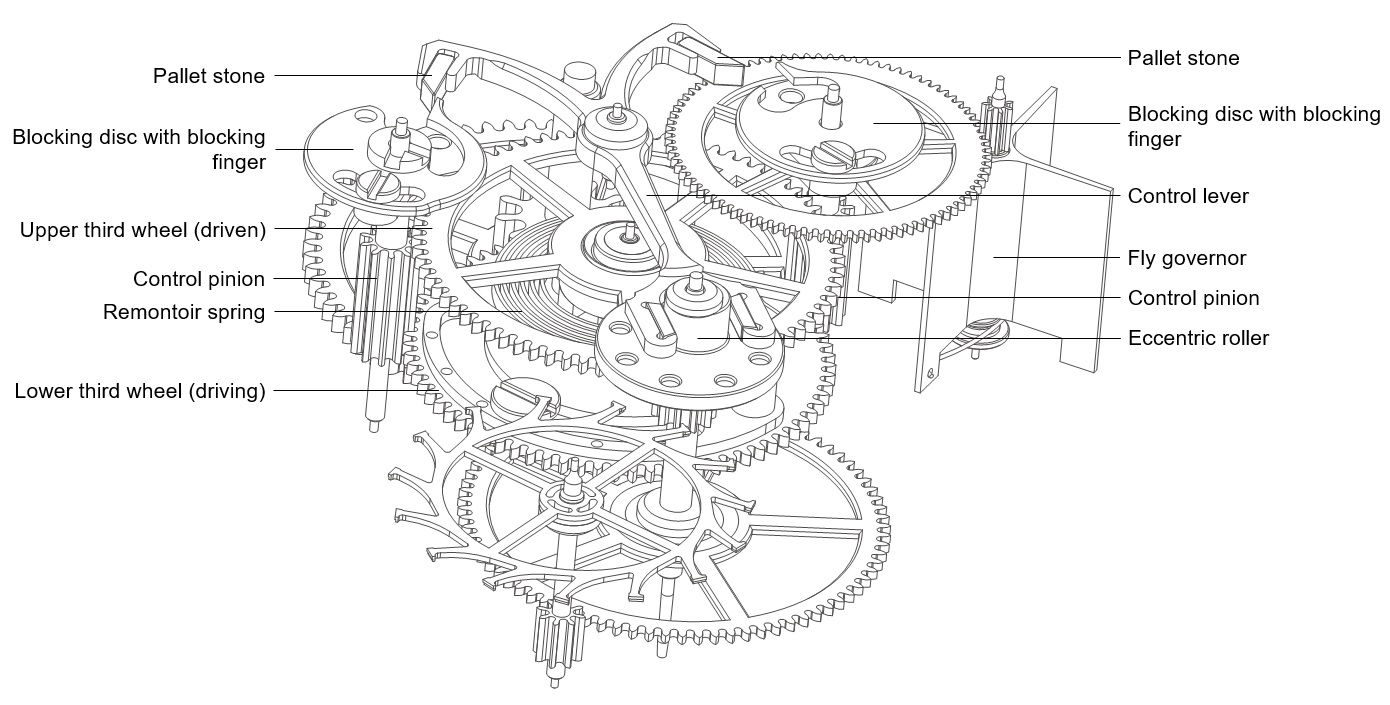
The pretensioned remontoir spring keeps receiving uniform amounts of energy from the mainspring via the centre wheel and the third wheel pinion stores extra power. In this situation, the lower (driving) third wheel is fixed. Meanwhile, the remontoir spring transmits the newly absorbed energy to the upper (driven) third wheel from where it is transferred to the escapement via the rest of the wheel train.
During this, the lower (driving) third wheel is alternately held by two control pinions. Their upper ends are each configured with a blocking disc and a blocking finger that alternately rest against one of the pallet stones of the Y-shaped control lever.
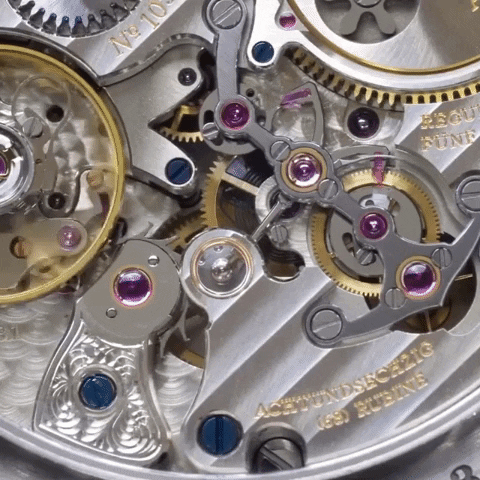
Please note the instant discharge towards the right. Courtesy of @penny_watch
Every 60 seconds, the lower (driving) third wheel is released by the slightly rotating control pinions, and thus generates an energy impulse for switching the disc mechanism. This process is regulated by the control lever with its cyclical pivoting motion derived from the fourth wheel. With the fourth wheel, the eccentric roller on the same arbor rotates once a minute, causing the control lever to move back and forth.
So every minute, the constant force mechanism releases enough energy to move all three discs; but, this creates another problem. Because, only once in every hour the watch needs such energy. So, what to do with the rest? There comes another ingenious solution called windflüge (wind break), a part resembling a revolving door which can be seen beneath the last jewel bearing of the remontoire bridge. The wind break starts to turn upon the tension release and dumps the rest of the energy by using friction – hence completes the marvel taking place every minute.
Moreover, the caliber L043.1 houses only 36 hours of power reserve – and that is again a responsible decision made possible by the Maltese-cross or stop-work system. Here, I’d like to quote from my watchmaker friend Xavier on how:
“Generally, stop-work is used to cut both the top and the bottom of the energy release to gain consistency. You cut the top and bottom extremes of the power to let the mainspring work only in the less variable central part of the reserve.
A little-known fact, the same mechanism is also present at the first generation Datograph models.
Apart from such mind-blowing technicality, what are things that make an A. Lange & Söhne caliber extraordinary?
Enter: movement architecture and exemplary finish.
The movement measures 33.6 mm in diameter and comprises 415 parts. Within this small area, one can find a myriad of finishing techniques from perlage to free-hand engraving to mirror polish. Finishing contributes to the overall architecture splendidly. For example, the plates next to the remontoir bridge do not feature the usual bevels or circumferential polish to put the stage light on the bridge itself. All in all, the caliber L043.1 – as most other Lange movements are, an example of movement architecture and finish.
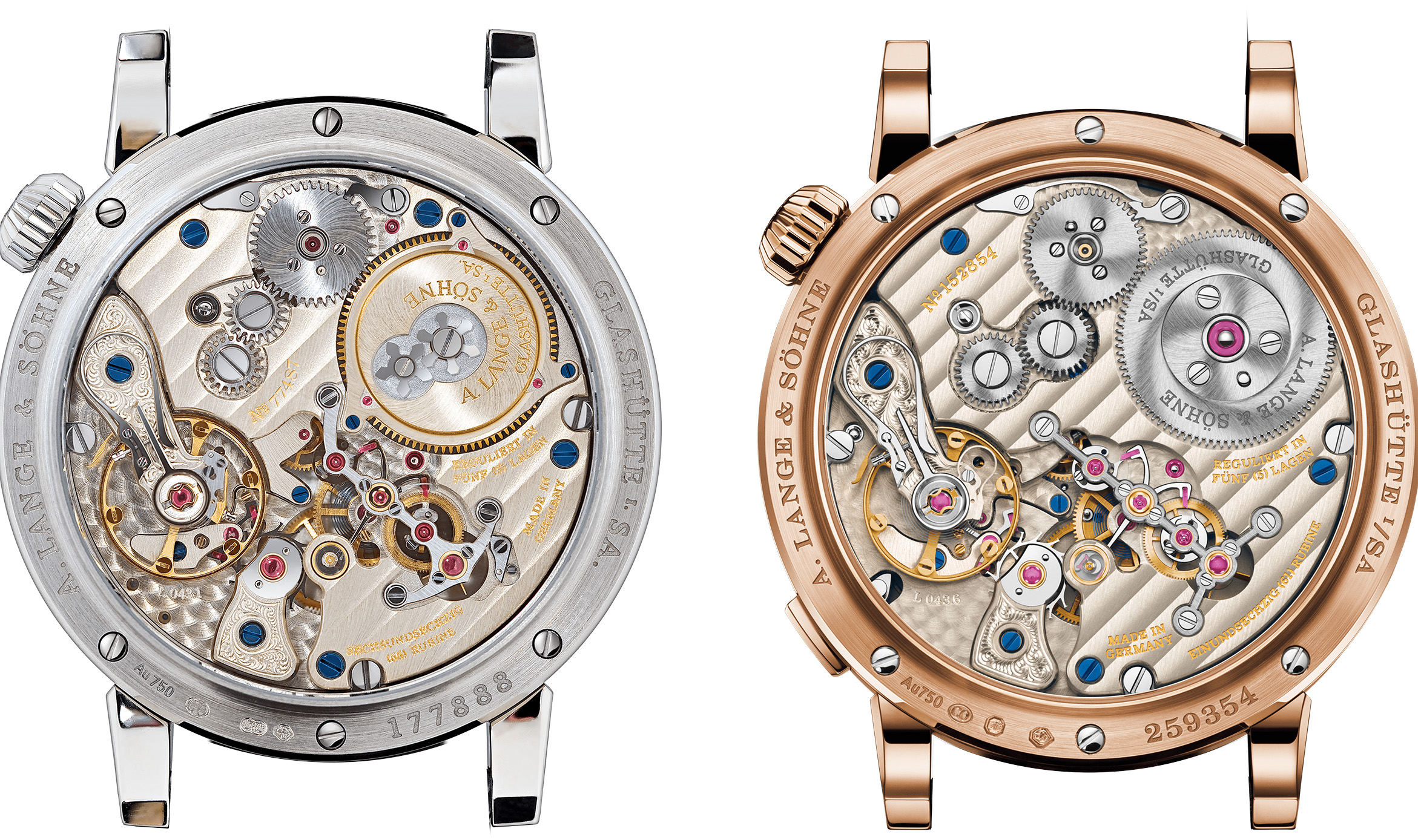
Caliber l043.1 (left) and Caliber L043.6 with modernized look, and updated technics. Source: Lange Uhren GmbH
The new caliber, came with the introduction of the Zeitwerk Date in 2019, doubles in power reserve to 72 hours thanks to its new barrel system, without increasing in size. Just like its dial side, we see a few changes, the biggest departures being the straight remontoire bridge and the sunray finished ratchet wheel.
With the new updates, I can wholeheartedly say that A. Lange & Söhne brought a fresh breath to the signature Zeitwerk collection and I don’t have any doubts that the new collection is going to be as successful.
One note here: If you check out some Zeitwerk reviews, you are going to see claims such as all the steel parts of the Zeitwerk is black polished – which is simply not correct. Only the Maltese cross and escape wheel cap features flat polish; which slightly resembles the black polish. Such technique is simply not feasible to apply to relatively mass-produced watches, therefore not present in Zeitwerk. The only watch with a surprising amount of black polish on steel parts is the Grand Complication – retails for €1.92 million.
Pre-Arming of the Zeitwerk Discs
It’s a common practice at Lange to implement silent updates to their movements throughout their lifetimes—a philosophy that reflects their commitment to continual progress and innovation, embodying the principle of “Never Stand Still.” Since its inception, the caliber L043.1 has undergone two significant changes. The first involved an update to the balance system, a modification that doesn’t create a substantial difference for the user. The second change was the elimination of the pre-arming of the discs, implemented in 2012 and mid-2017, respectively.
The Zeitwerk Lumen is the first model to incorporate the balance system update, suggesting that this improvement was introduced around 2010, shortly after the introduction of the original model. It’s worth noting that some watches in the Lumen line may still feature the old balance system, as Lange produces watches based on ordered numbers rather than consecutively. Therefore, it’s challenging to determine after which specific watch number the update is present.
The second improvement, related to the elimination of pre-arming, is more notable for enhancing the user experience and has gained significant recognition within the horology community.
For those who are not familiar with the pre-arming; please carefully watch the gif. You are going to notice a slight move on the minute discs some 5-10 seconds before the actual jump; like a rocket getting ready for launch. Since Zeitwerk’s inception, this caused quite a stir in forums/social media – whether it is a movement defect or not… Consequently, I also asked this question and I heard from the manufacturé executives that this was actually intended (I leave it to your judgement to believe it or not). Nevertheless, the brand eliminated this jump around mid-2017.
After this update, collectors frequently ask the question; can Lange eliminate my Zeitwerk’s pre-arming during service?, and the answer is no. The mechanism requires a substantial change in the movement it is not possible with regular servicing.
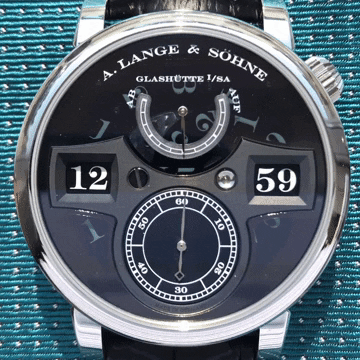
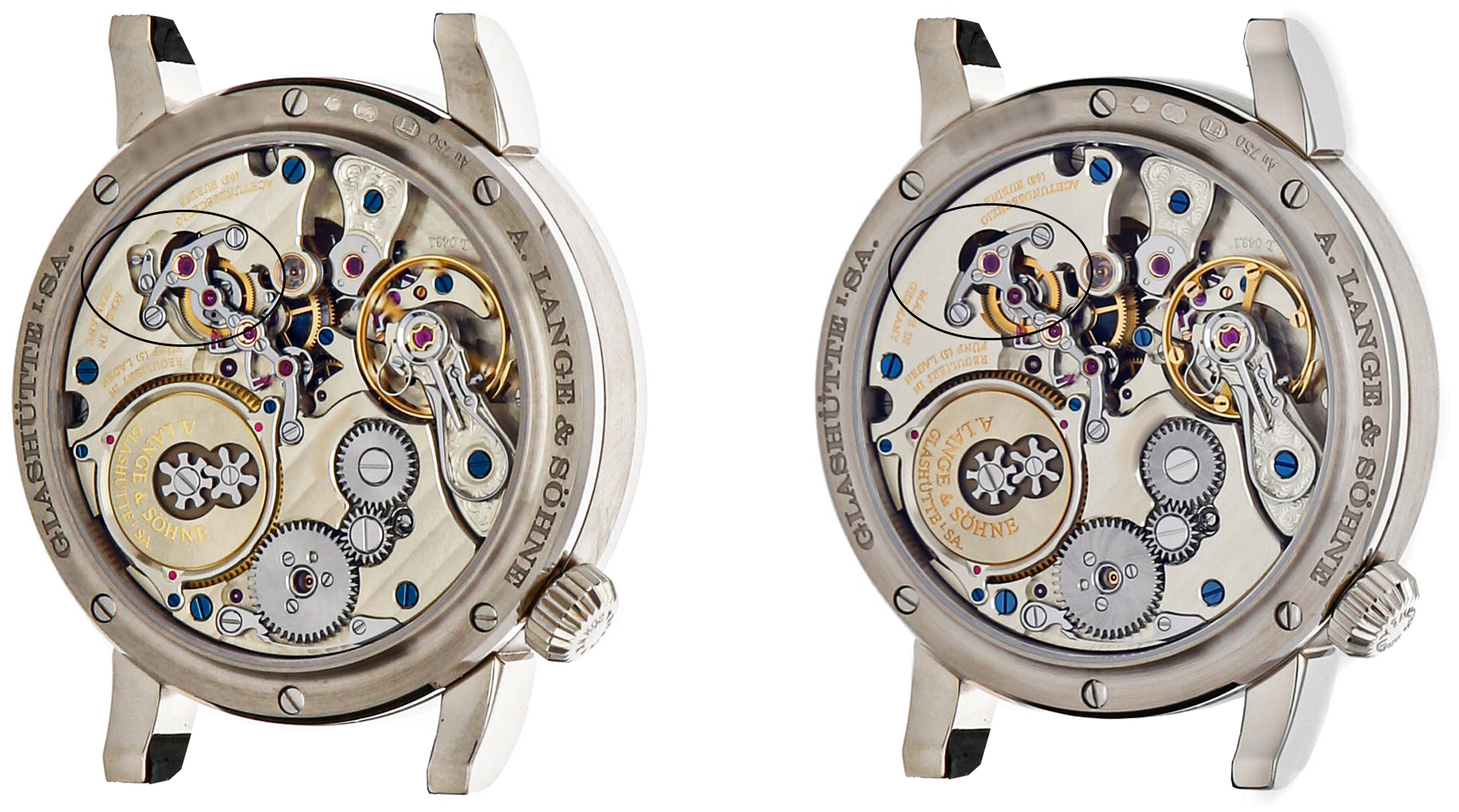
If you would like to fully understand how Lange solved the pre-arming, please read the two following articles in order:
All in all, I am pretty sure someone who is able to buy such a monumental watch is reading this, and I can only tell you one thing: GO! Because, someday A. Lange & Söhne is going to discontinue the Zeitwerk and when that day comes, this watch with no alternative is going to wear the crown. This watch is the second renaissance of A. Lange & Söhne.
Concluding Thoughts / Buying a Zeitwerk
The Zeitwerk may not be the first in its field, considering historical predecessors like Pallweber and more recent advancements by Vianney Halter with the Harry Winston Opus 3. However, the Zeitwerk distinguishes itself by achieving unparalleled precision in its time display, with the jump occurring exactly at 60 seconds. It’s a courageous creation, embodying A. Lange & Söhne’s commitment to overcoming challenges and their motto to “Never Stand Still.” In the landscape of modern watchmaking, this relatively young 19-year-old company leaves defining marks, making the Zeitwerk more than just a watch.
Beyond its aesthetic and mechanical appeal, the Zeitwerk represents a unique proposition and a testament to the brand’s innovative spirit. In the A. Lange & Söhne catalog, the Zeitwerk stands out as something truly distinctive, and the joy of living with such a timepiece goes beyond the surface.
In terms of market dynamics, the pre-owned Zeitwerk models have seen a shift in pricing. While initially hovering around $50k when the retail price was in the mid $80k range, the growing popularity of the brand has impacted the secondary market. As of 2023, the most popular reference (140.029) of the first generation is available in the high $60k to $70k range. Considering the new generation’s MSRP surpassing $100k, the first generation Zeitwerk appears to be an incredible bargain in the secondary market.
Thank you for your time and thoughtful insights. If you have any more questions or topics you’d like to explore, feel free to let me know!
I hope this was a valuable guide for whomever is looking for a Zeitwerk model or just want to learn the details and history of these pieces. If you’d like to chat, sell or buy a Zeitwerk, please kindly reach out to me via [email protected]
Please see other Zeitwerk Articles:
FAMILIES / COMPLICATIONS
STAY IN TOUCH
Sign up for the newsletter to get to know first about rare pieces at Marketplace and in-depth articles added to the encyclopedia, for you to make the most informed choice, and first access!

